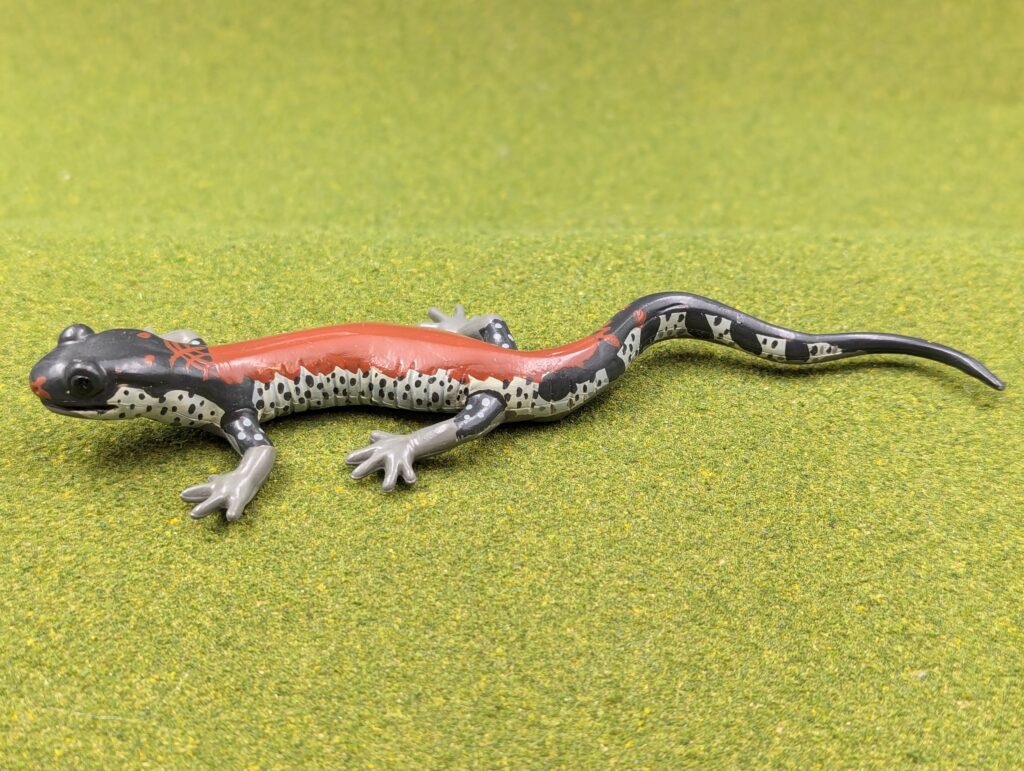
Here is one more lungless plethodontid salamander from the official Tennessee Aquarium series, the yonahlossee salamander Plethodon yonahlossee, item number 210472. Probably the figure with the most distinctive colours, it may also be one of the salamander figures with the longest lasting presence on the various Safari lines overall. As a species, it is notable for being the largest species of Plethodon in North America, with females reaching lengths up to 22cm, close to 9 inches, and males smaller. Like other members of the family, they are lungless and rely on their skin for respiration. And like other members of their genus, the yonahlossee salamander does not have a larval state (referred to as direct development), but are born as miniature adults.

Yonahlossee salamanders are found primarily in parts of Tennessee, North Carolina, and small areas in Virginia. Their preferred habitats are upland wooded habitats like deciduous forests, in damp areas with shade, fallen trees and moss cover. They may also appear in hillsides around rocks slides covered in ferns and mosses; in windfalls; and grassed areas near woods. In captivity they tend to display territorial aggression but their natural behaviour is less certain. Predators likely include birds, snakes and mammals, but they do have glands under the tail that contain chemicals that repel mammals and birds; they also experience tonic immobility after being contacted, which may dissuade visual predators. The yonahlossee salamander in turn is predatory, preying on all manner of invertebrates. They are listed as Least Concern by the IUCN due to their wide distribution and habitat range, and apparently stable overall population numbers.

The figure, on viewing, is as striking in appearance as the real animal. The model at 15.7 cm long is to scale with the average size specimens, probably a male as they tend to be noticeably smaller. It is sculpted in the typical active pose, flat to the ground with feet on the ground, and with head slightly raised and mouth closed. The eyes are sculpted high on the head, picked out in shiny black and the nostrils are present. The body is sculpted in a very serpentine pose, with several curves in the long tail. The back features a small indented fold along the spine at the shoulder and at the tail base, which matches the actual salamander as it moves along; the costal grooves are also clearly sculpted. On the underside, the cloacal bulge is prominent. The figure is either cast in medium grey plastic or painted this colour throughout.

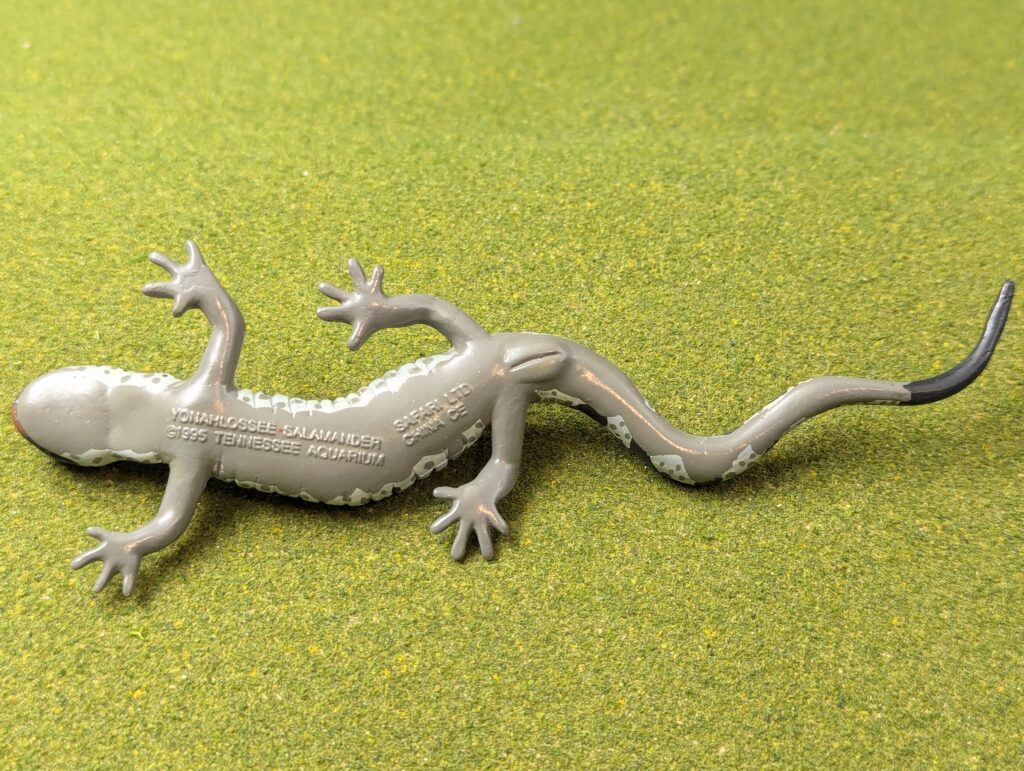
The colour of this model is its most remarkable feature, more elaborate than any figure seen so far. The dorsal surface has a solid reddish-brown band across most of the back from the neck to past the base of the tail. At both ends of the reddish blotch there are some smaller red splotches and stripes; in the actual animal, a fully mature animal has a mostly solid red band, so this figure would represent a mostly mature individual (which also suits the size). Beyond this red blotch the top of the tail and back of the head are the dark charcoal, and are unmarked. There is a small red blotch on the upper lip, which is incorrect (a rare miss…and unnecessary…).
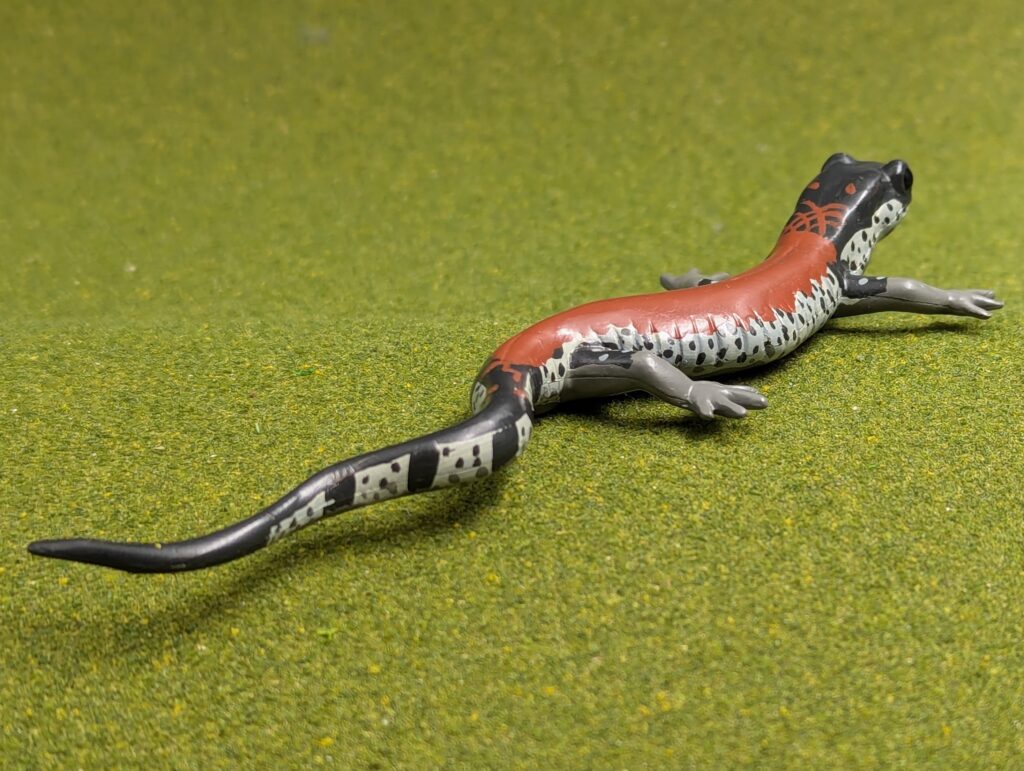
The sides of the figures, as seen in the real animal, are a very light grey (almost white) with a number of dark spots, on the tail the spots are interspersed with dark bands; the tail tip is the dark charcoal all around. The legs stand out as having the dark grey with medium grey spots on the thighs, and just plain medium grey on the distal limbs; it looks odd but does correspond with the real animal. The entire underside from chin to tail (not withstanding the tip) is the base medium grey; I can’t find visual references, but I think there are sometimes markings on the real animal but I’m not sure. Overall, a figure that represents the distinct colour pattern of the real yonahlosee salamander well (and offers a real challenge to describe…)

I had mentioned that the figure has a longer legacy with Safari lines than most of the figures in the Tennessee Aquarium set. That is because, for whatever reason (maybe size?) this model has been reissued many times for other Safari lines. These include as a model in the Translucents series, where the figure was produced in both red and green (not to be confused with the Tennessee Aquarium salamanders of the same name…and yes that causes confusion with the species names); later, the same model was used as their Glow-in-the-Dark Salamander for that line in the early 2010s (item number 264529). Only one other model from the line has seen a similar continuation of use, but I haven’t gotten there yet! I have included a comparison of the two models here; clearly the same sculpt, although the tail of the Glow version does not extend as straight back.
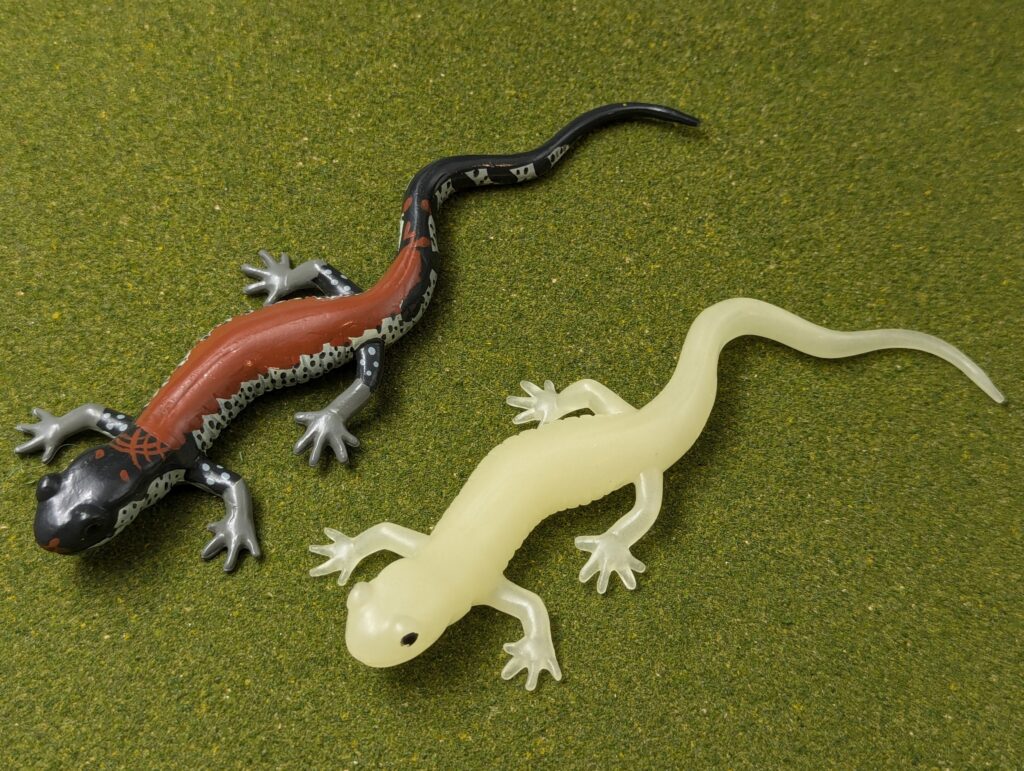
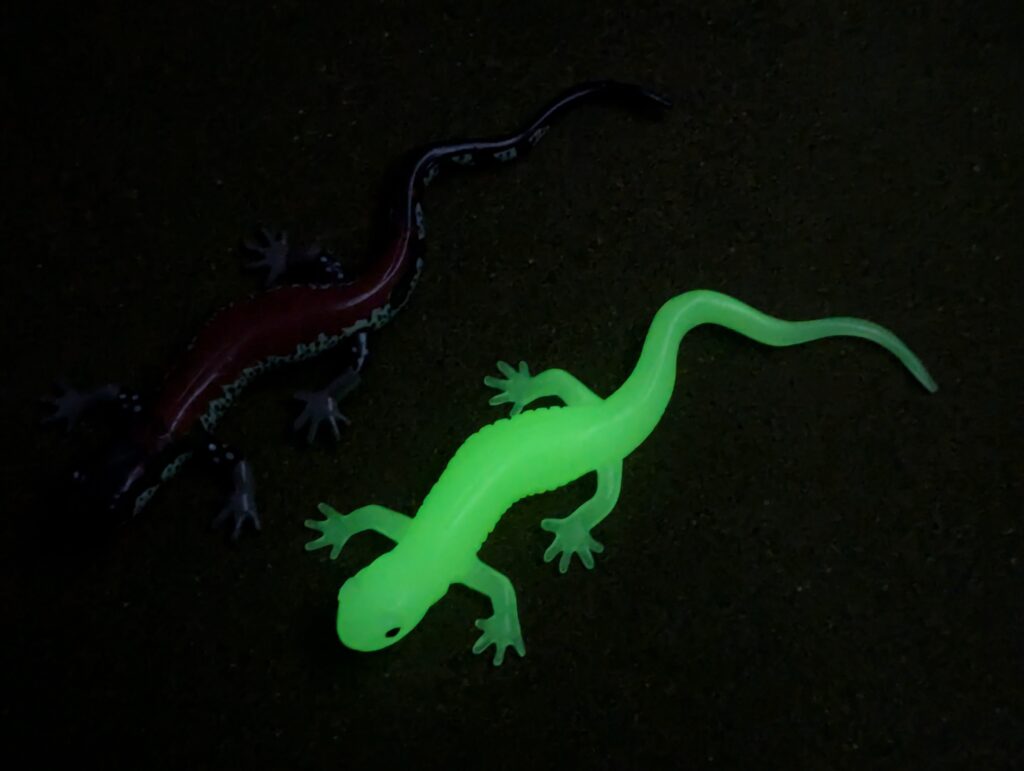
As always, with these figures, they are amazing a beautiful models, standing up equally as toys (when first release) or educational and display models (now…mostly because they have become quite rare and pricey). It would be great to see more models like this again, and for fans of salamanders I hope you can track this one down! And for the record, as of this writing the Glow version is retired as well. I really hope Safari comes back to salamanders like this someday.
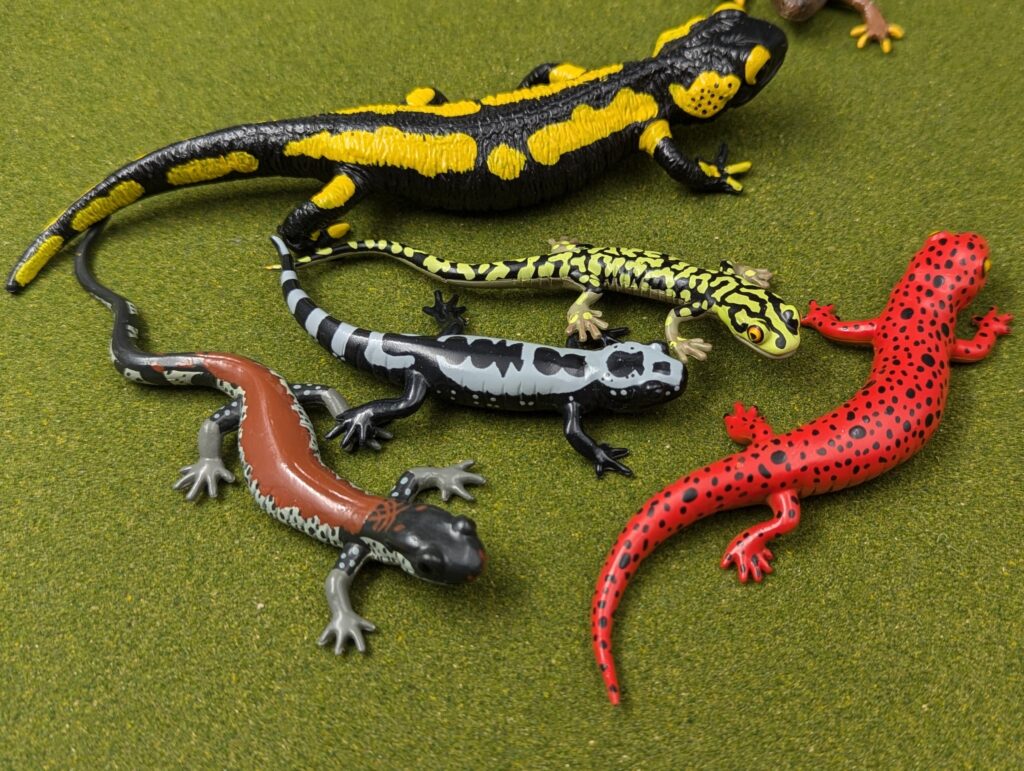
Disclaimer: links to Ebay and Amazon on the AnimalToyBlog are affiliate links, so we make a small commission if you use them. Thanks for supporting us!




This is the one figure in the set I’d really really like to get!!!!
Just went to eBay! Found one (at almost 1/4 the cost of the ones out of Europe)! Oh, and the seller is here in Utah!
That’s fantastic! Based on prices I’ve seen… that’s still pricier than when they were available (I got mine for $3 USD!) Some small online store that an internet friend pointed me to, I got the whole series then.
Should have just bought all the stock they had